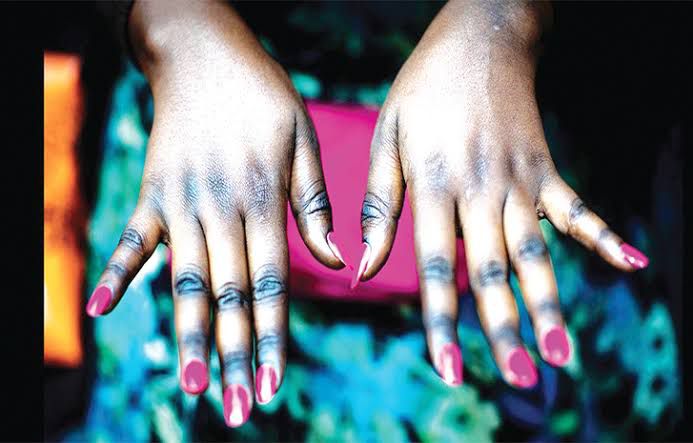The term “skin bleaching” describes the use of cosmetics to lighten dark spots on the skin or to achieve a lighter complexion overall. In addition to professional treatments like chemical peels and laser therapy, products include tablets, soaps, and bleaching creams.
This practice is very common worldwide and even more in our society. Many times, you find Nigerians trying to lighten their skin because “they want their real colour to come out” or “na wetin dey reign”. Researchers link the popularity of skin bleaching to racism. Individuals who think that the only skin tones that are appealing are those with lighter complexions may start to feel unhappy with their looks.
According to a 2019 Nigerian study, skin bleaching can be avoided with self-acceptance and knowledge of the dangers involved.
Methods and Ingredients
Popularly, individuals use creams and other topical products to achieve bleaching. These products may contain ingredients such as vitamin C, Niacinamide, Retinol, Hydroquinone, Mercury, Arbutin, Aleosin, Turmeric, etc.
Many products that promise to lighten skin tone are not safe. They include heavy metals like mercury, which is poisonous. Mercury exposure can be fatal in certain cases. People who wash mercury-containing products off their skin end up in the ocean, where it can enter the food chain and contaminate fish. Eating this fish can be harmful to humans and other animals. Although not all, many countries have prohibited the use of mercury in cosmetics. However, in such places, online purchases of products containing it are frequently possible.
Side Effects of Skin Bleaching
Hyperpigmentation can be safely treated if one follows dermatologist-approved procedures and stays away from dangerous products.
Even with safer techniques, attempts to bleach the entire skin are always dangerous.
Some of the side effects of skin bleaching include
- Dermatitis: This is inflammation of the skin caused by contact with certain substances. Symptoms can range from mild to severe and include skin redness, Blisters, skin ulcers, Hives, dry, scaly skin, swelling, itching, burning and tenderness.
- Skin cancer: Because melanin also helps protect your skin from harmful UV rays, bleaching products that stop melanin production can put you at greater risk of developing certain skin cancers.
- Mercury poisoning: Signs and symptoms of mercury poisoning include: numbness, high blood pressure, fatigue, sensitivity to light, neurologic symptoms (such as tremor, memory loss, and irritability), and kidney failure. In some cases, mercury exposure can be fatal
- Exogenous ochronosis: This condition results in blue-black pigmentation on the skin. It typically arises as a side effect of using hydroquinone-containing skin-whitening treatments over an extended period of time. People who use it on large areas of the body or on the entire body are more likely to develop it.
- Steroid acne: This kind of acne is brought on by the use of steroids, such as corticosteroids, which are present in some skin-whitening products. Steroid usage might cause the skin’s oil glands to become more susceptible to inflammation and infection, leading to the development of acne. One may see whiteheads, blackheads, small red bumps, large and painful red lumps, acne scars, etc. The chest is most commonly affected; however, the back, arms, and other parts may start to develop acne with long-term corticosteroid use.
- Nephrotic syndrome: Mercury-containing lightening creams have been linked to nephrotic syndrome. Nephrotic syndrome is a kidney disease that is frequently brought on by injury to the kidney’s blood vessels, which are in charge of filtering waste and extra water out of the body. Your body excretes excessive amounts of protein in your urine as a result. Symptoms may include swelling around the eyes, leg swelling, foamy urine, loss of appetite, fatigue, etc.
Most times, skin-bleaching products are not recommended. However, in case one wants to lighten dark spots or small areas of hyperpigmentation, we suggest that they see a dermatologist to prescribe products based on their needs.
The pressure of white beauty standards, colourism, and racism drives the demand for skin-bleaching products. However, research shows that educating people on the potential risks, and fostering self-acceptance, can prevent people from using risky products.
If a person is concerned about hyperpigmentation or is considering trying skin bleaching, the safest strategy is to speak with a doctor.


It’s the best time to make a few plans for the long run and it is time to be happy.
I’ve read this put up and if I could I desire to recommend you few attention-grabbing things or suggestions.
Perhaps you can write next articles regarding this article.
I want to learn even more issues approximately it!